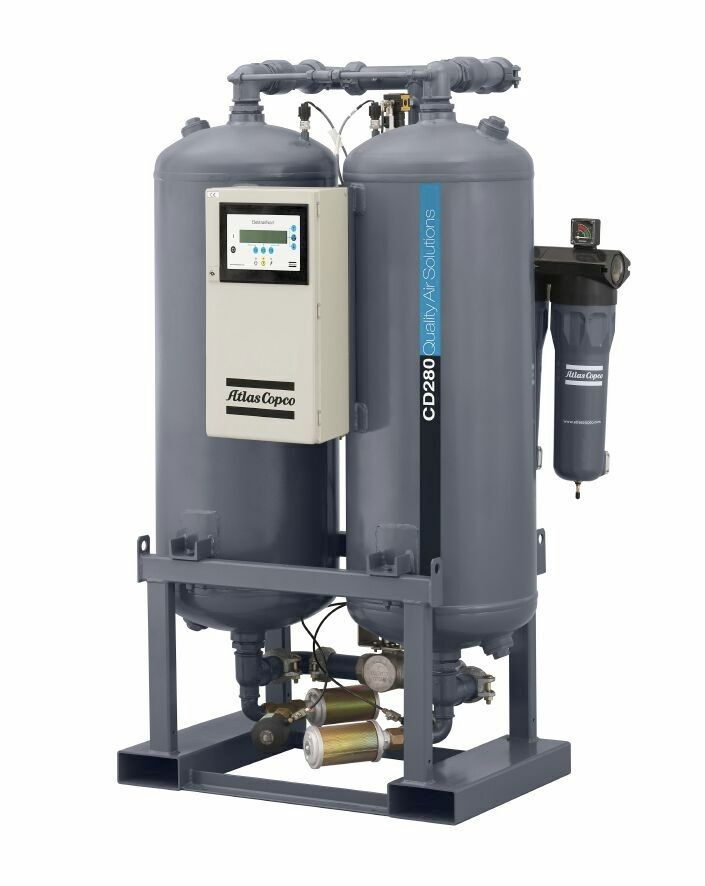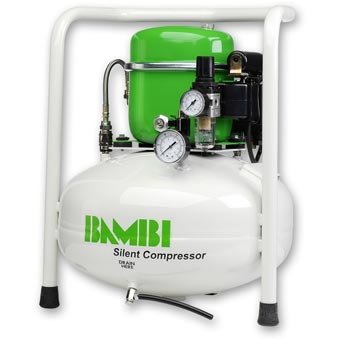Topic: Air Compressor
In the group of rotary air compressors, we have the screw compressor. This compressor is more effective than the popular reciprocating compressor, since it compresses air on 100% of each rotation, compared to only 50% of the stroke for a single-acting piston compressor.
This makes them not only more effective, but it also saves space and allows for great air flow outputs and higher pressures without taking up more space. The screw compressor has its name from the two screw rotating inside the compression chamber. They both intermesh with each other and when they do they form an air pocket between themselves and the inner wall of the compression chamber. Only one of the screws are connected to the compressor motor, whiles the other screw is driven by gears and just follows the lead screw around.
Another advantage with screw air compressors, is that they don’t rely on flow resistance to create compressed air. The air pockets, mentioned earlier, gradually decreases in size as they travel down the compression chamber. For this reason the screw compressor is called resistance free compressor. By placing several pressure exhaust valves, at various lengths down the compression chamber, we can quite precisely control the load and the pressure the screw compressor generates, by selecting different exhaust valves.
For internal cooling and lubrication, the air compressor uses air compressor oil. A measured amount of oil is injected and mixed with the intake air. This oil then forms a film inside the compressor that seals the gaps in between the screws and the compression chamber. The air compressor oil, which is still aerosol, is heated by the process and thereby extracts most of the heat from the compressor. The compressed air containing air compressor oil as well, is pushed out of the compressor and through an oil separator. In this oil separator, close to all of the air compressor oil is separated from the air. The now very hot oil is taken through an air cooled heat exchanger, where it’s cooled down before it is again injected into the intake air.
The hot air, normally around 185 degrees Fahrenheit is either taken through and air dryer, or directly stored in an air tank.
Updated: Monday, 6 January 2014 11:15 PM EST
Post Comment | Permalink | Share This Post


 To ensure that you air compressor will work properly and deliver high quality air at good air pressures, there are a couple of things you should check regularly. Even though air compressors are simple and robust, they can, and will break down, if maintenance is neglected for too long. The problems with breakdown is that they always happens at the worst imagined time, when you are far away from any spare parts and desperately needs an air compressor to finish the work. The key word to avoid this situation is, preventive maintenance. By doing a few regurarly checks and parts replacement we can ensure a good working compressor with close to no possibility of braking down.
To ensure that you air compressor will work properly and deliver high quality air at good air pressures, there are a couple of things you should check regularly. Even though air compressors are simple and robust, they can, and will break down, if maintenance is neglected for too long. The problems with breakdown is that they always happens at the worst imagined time, when you are far away from any spare parts and desperately needs an air compressor to finish the work. The key word to avoid this situation is, preventive maintenance. By doing a few regurarly checks and parts replacement we can ensure a good working compressor with close to no possibility of braking down.
